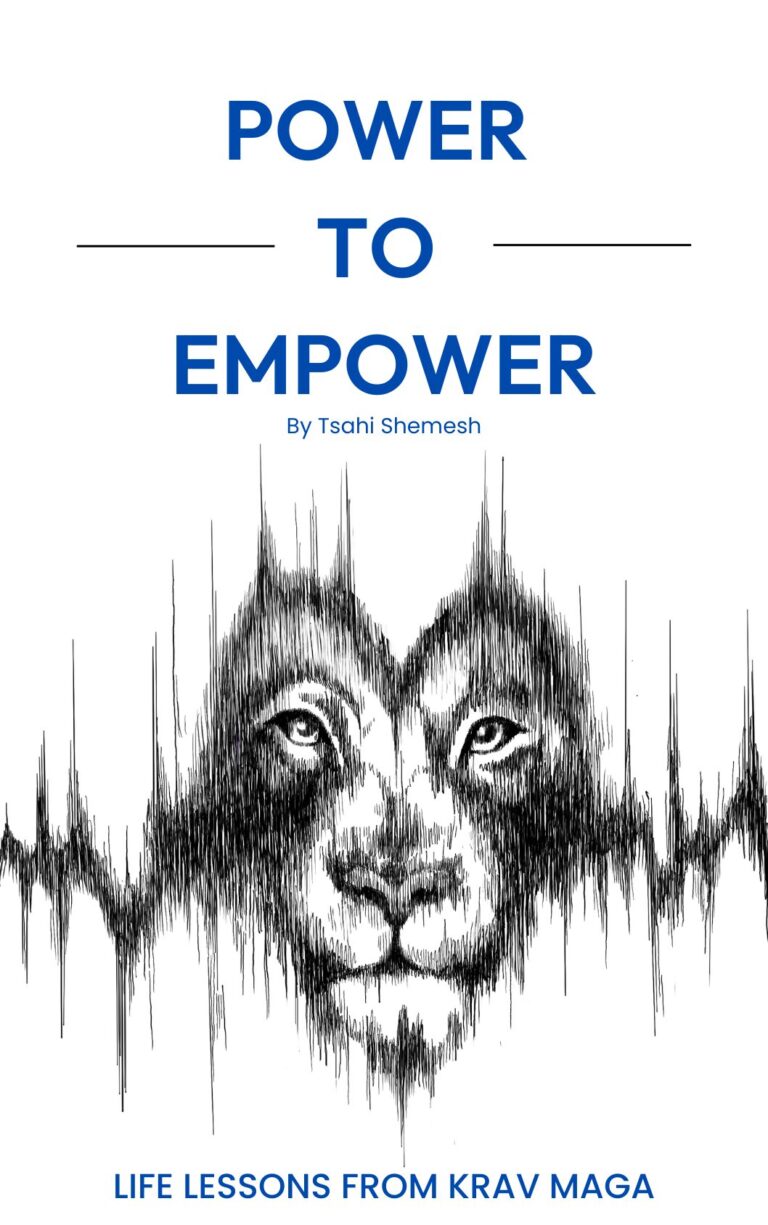Dreams Can Reveal The Truth
Almost every night, we enter a world where logic bends, time warps, and reality shifts—our dreams. And almost every morning, we forget them.
A recent article I read explored why some people remember their dreams while others don’t. The short version? It has to do with personality traits, emotional regulation, cultural conditioning, and psychological defense mechanisms like repression and denial.
So, what does any of that have to do with Krav Maga?
Everything.
Because the way we process imaginary threats like those in our dreams is not so different from how we respond to real ones. And if you’ve been following this blog for a while, you already know that self-defense is not just about physical techniques. It’s about how you think when pressure hits. It’s about training your body, your instincts, and your mindset to respond with clarity and purpose when it matters most.
When the Dream Feels Too Real
Many students have shared something interesting with me over the years. Long before they ever set foot on the mat, they had dreams about being attacked, chased, grabbed, and cornered. And in those dreams, their body wouldn’t respond. They’d try to punch or scream, but nothing came out. Their limbs felt heavy, like they were moving through water. And they’d wake up frustrated, helpless, sometimes in a panic.
They remember those dreams vividly—not because dreams are usually that memorable, but because those dreams were trying to say something. Something their waking mind had been too afraid to admit.
The fear wasn’t of violence itself. It was the fear that if violence came, they wouldn’t be able to respond.
That’s exactly what the research in the article suggests. People who repress fear, who push it out of their conscious awareness, often experience it indirectly—through dreams. And they remember those dreams because they carry emotional weight. The body knows what the conscious mind avoids: that we’re not always ready.
But those dreams aren’t just a warning. They’re a window. A starting point. We use that fear as fuel.
In class, we confront it head-on. We simulate the freeze. We train the response. And over time, the nightmare scenario, the one where you can’t move, can’t scream, can’t figh,t stops showing up. Because it no longer reflects the person you are becoming.
You’re not stuck anymore. You’re not frozen. You’re awake. You’re trained. You’re ready.
Self-Defense Is More Than Technique
It’s not just about learning to strike or break free from a choke. True self-defense is about learning how to face fear without numbing yourself to it. To move toward discomfort, not away from it.
The same mental blocks that prevent people from remembering dreams are the ones that show up in high-pressure situations. Denial. Dissociation. Avoidance.
And the hard truth? You won’t rise to the occasion, you’ll fall to your level of training. That includes mental training.
I talked about this exact concept in my blog post “Why Relaxing Makes You Anxious” – how your instincts often sense danger before your logic catches up. But instincts can only take over if you’ve trained them. If your natural response is avoidance, your body will mirror that.
So when we say that “training gives you choices,” it’s not about memorizing what to do in a wrist grab or how to throw a punch. It’s about reconditioning your brain to stay in the fight, mentally and emotionally, when every part of you wants to check out.
Emotional Awareness = Situational Awareness
The article also highlights how emotional people are more likely to recall their dreams, while “rational types” are less likely. That doesn’t mean rational people are smarter. It means they may have trained themselves to suppress the things they can’t logically explain or control.
But here’s the twist: in a real self-defense situation, both types are at risk.
The overly emotional person might panic. The overly rational person might freeze trying to “analyze” what’s happening. You don’t need a dream analysis to understand that in a moment of danger, overthinking or emotional overwhelm will both get you hurt.
That’s why in our classes, we train for pressure. We simulate stress. We teach you to feel the moment without being overtaken by it. Whether you’re more emotional or more logical, the goal is the same: to respond with presence, not paralysis.
This is something I emphasized in my article on “How Krav Maga Helps Heal Trauma & Anxiety”. Your breath doesn’t just regulate your body, it regulates your ability to stay in the present. And staying present is the opposite of repression. It’s awareness. It’s a choice.
Trauma Isn’t a Dream, But It’s a Story That Can Be Rewritten.
If you’ve ever experienced trauma, you know that the mind can rewrite reality. It’s not unlike dreaming—you wake up from something you didn’t fully process, and it lingers in your system.
I’ve seen this pattern not just in research or theory, but in real people.
One of my students once told me about a dream he had before starting Krav Maga—he was being attacked, and in the dream, he froze. He couldn’t scream. Couldn’t move. That fear followed him into his waking life. Not just the fear of being hurt, but the fear of how he might respond when it counted. Later, he was actually attacked on the subway. And to his surprise, he didn’t lose control. He stayed calm. He managed the situation without violence. That was the real win, not the absence of harm, but the presence of control.
I’ve faced my own tests too. In “The Day I Got Attacked in New York For Being Jewish”, I shared my experience of being assaulted in broad daylight, not because of something I did, but because of who I am. That day reminded me that none of us is immune. Even those who train, who teach, who prepare—get shaken. But what training gives you is the ability to return to yourself faster. To feel fear without being owned by it.
Both stories point to the same truth: the body remembers what the mind represses. And training brings those fears to the surface, just like dreams do, but gives you the tools to deal with them in real life.
Rest Is Part of Readiness
One more point the article made: people who get more REM sleep (deep, dream-heavy sleep) tend to have better emotional regulation. But if they don’t remember their dreams, it’s often because they’re not fully processing them.
Here’s how I interpret that: rest matters, but so does reflection.
At Krav Maga Experts, we train hard. But we also emphasize recovery. Not just for your muscles, but for your mind. Because if you’re always “on,” you’re not giving your brain space to integrate what you’ve learned. And if you never reflect, you never truly own your growth.
This connects to something I wrote in “The Science Behind the Transformation” about slowing down the moment so you can choose, not just react. Training teaches you that skill. But rest allows it to settle into your system.
Wake Up Before the Alarm
The alarm clock is the cue for you to wake up and start your day, even when you don’t want to get out of bed. It symbolized that you have to get up.
Life might wake you up with a punch to the face.
If your mind is used to avoiding discomfort, if it pushes away every “bad dream” before it becomes conscious, how will it handle a waking nightmare?
This is what training is for. It’s not just for the techniques. It’s not just for fitness. It’s for building the tools mental, physical, and emotional to stay awake when many others prefer to bury their head in the sand.
Training is how you wake up on your own terms. Not with panic, but with purpose. Not with fear, but with clarity. And not stuck in a freeze, but ready to move.
So yes, maybe you’ll never remember another dream. Perhaps that’s not the point.
What matters is that you remember what you’re capable of. You remember that you can respond. That you have trained. That you’re not helpless.
And the next time your mind tries to bury fear deep enough that it only surfaces in your sleep, you’ll already know what to do:
Stand tall. Take a breath. And move with intention.
Do something amazing,
Tsahi Shemesh
Founder & CEO
Krav Maga Experts
If this post resonated with you, you might also find these articles insightful:
- How Learning Krav Maga Changed My Life
- A Step-by-Step Guide to Learn Self-Defense
- Life Lessons We Should Learn From Kids


Thank you for all the thoughtful articles you are sharing on your website. Super helpful!
Your blog is a beacon of light in the often murky waters of online content. Your thoughtful analysis and insightful commentary never fail to leave a lasting impression. Keep up the amazing work!
Beautifully written,direct yet honest and clear and hits all the salient points of danger, awareness and preparation. A little off topic here but when i was younger growing up i hated chores, especially cooking. My dad used to joke honey if you dont like cooking you have to find a man who doesnt like to eat lmao. Hilarious in retrospect But now that im older i am so grateful i learned how to cook because it takes me 30 minutes to sometimes whip something in the kitchen in time for dinnner. It has also helped me and my husband save a ton of money because although we love eating out, he likes my cooking more. All those years my parents made me learn how to cook came in handy. I think i can apply the same logic here. Ive always been fascinated with self defense and i reached a reasonable belt in another martial arts when i was younger. I still am eager to learn more now that im older because here is the thing, if you do not want to learn how to defend yourself, you need to find a world where you can guarantee you will never find someone who has evil intentions. There is no such place, and having the knowledge and ability to protect yourself and your loved is the kind of insurance that is worth every effort and penny.